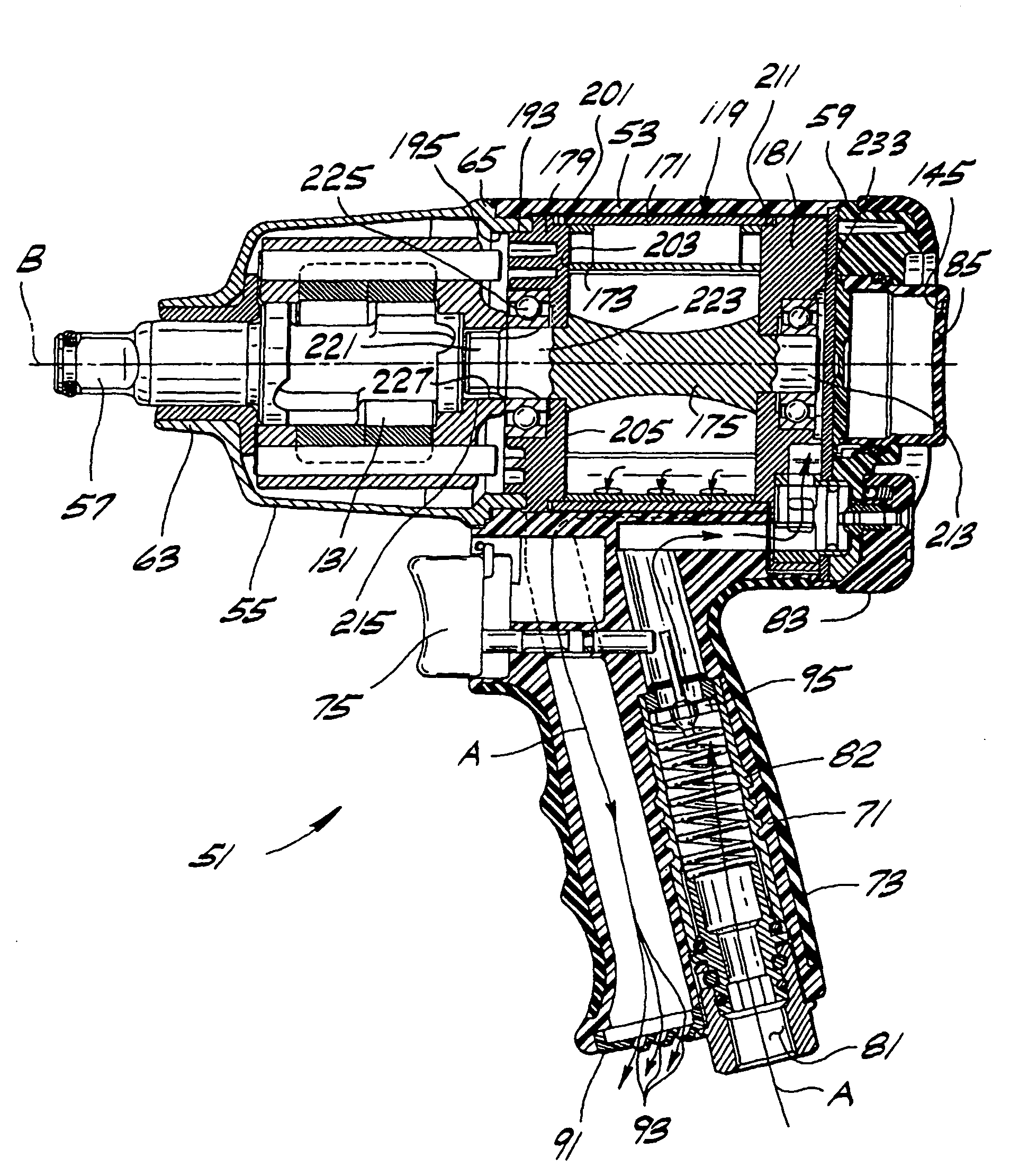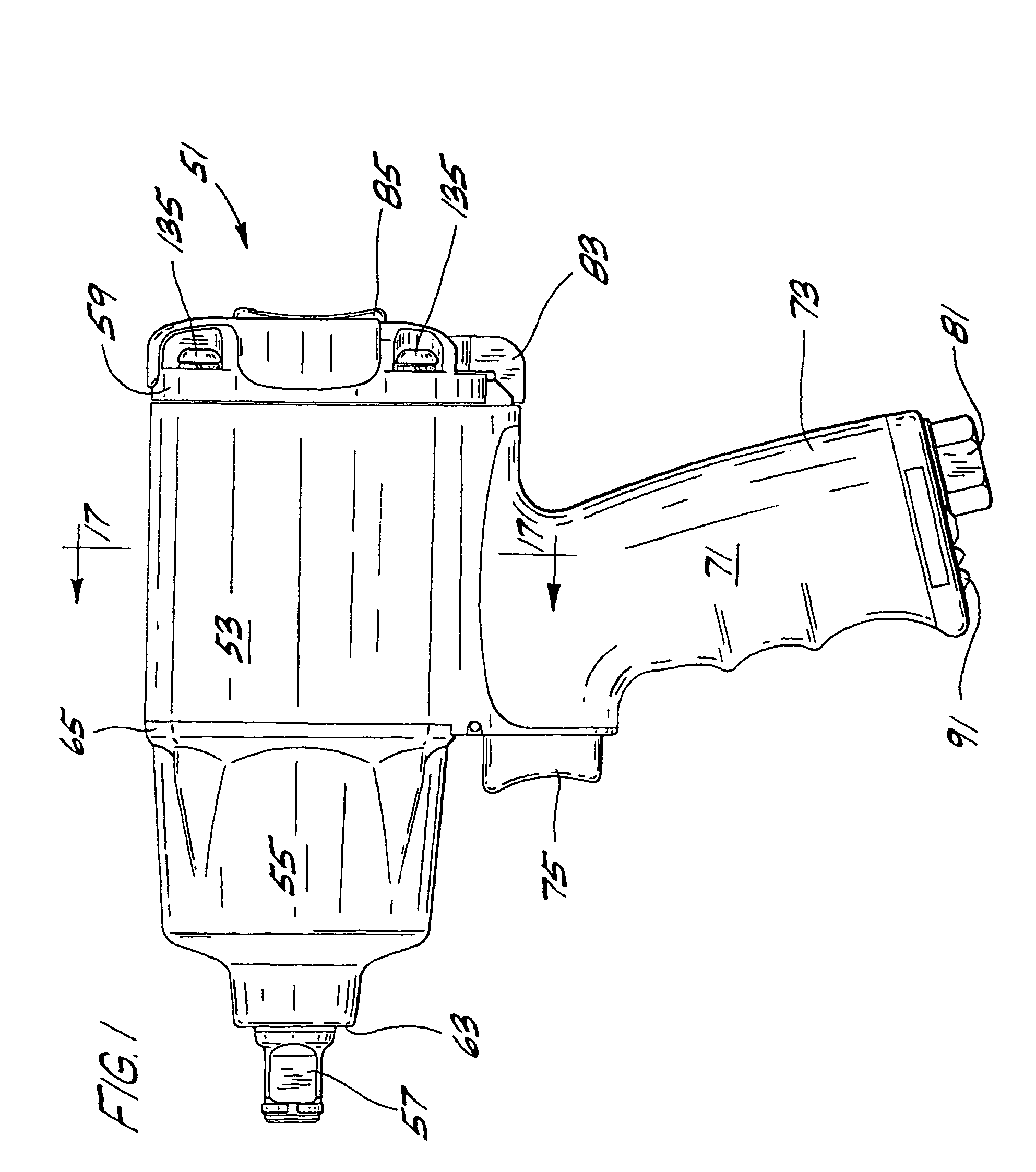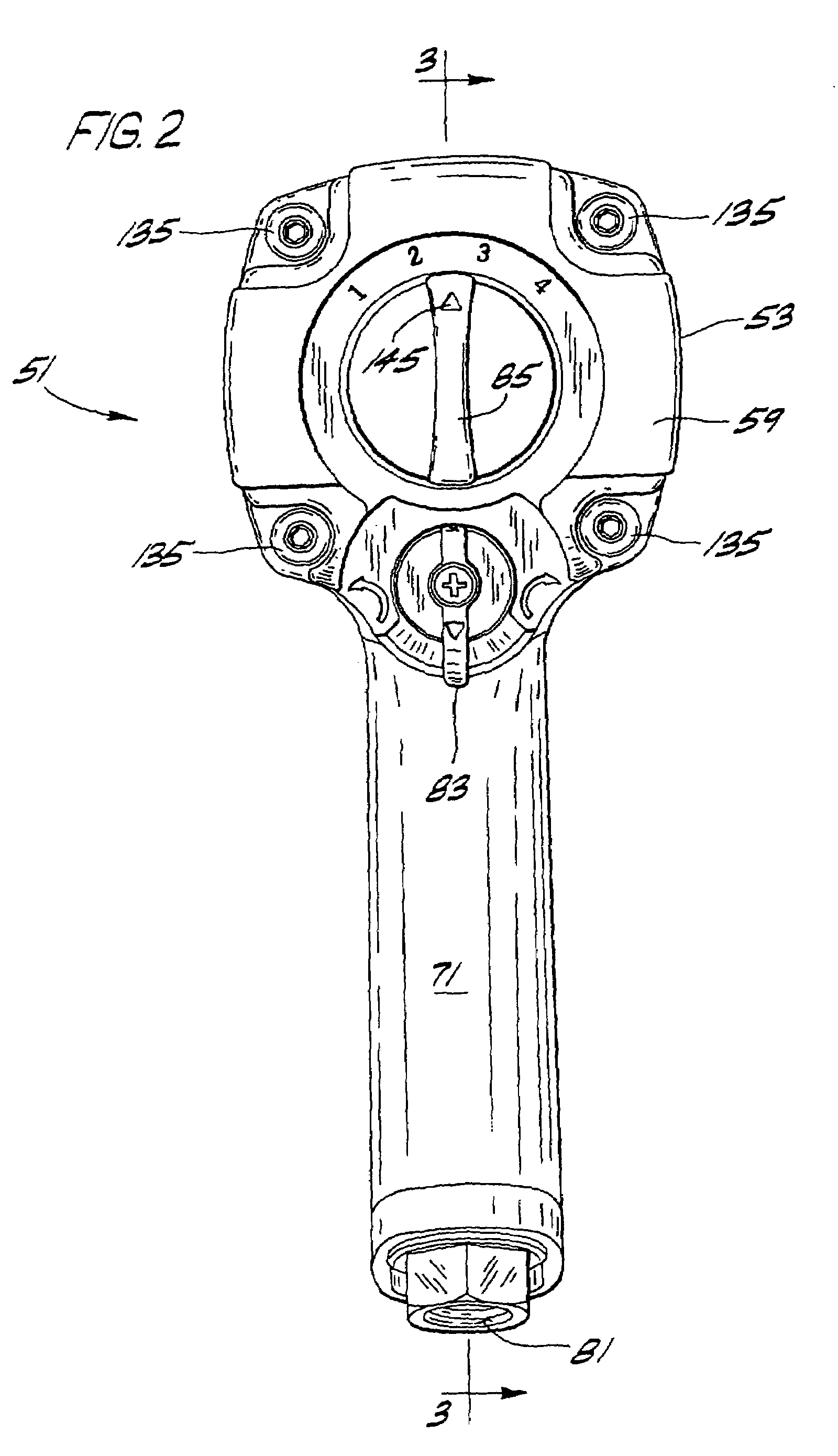Pneumatic rotary tool
a rotary tool and pneumatic technology, applied in the field of pneumatic rotary tools, can solve the problems of such as steel, and reducing the rigidity of plastic as compared with a strong metal, so as to reduce the amount of air entering the tool, reduce the weight and cost, and efficiently control the torque output of the motor
- Summary
- Abstract
- Description
- Claims
- Application Information
AI Technical Summary
Benefits of technology
Problems solved by technology
Method used
Image
Examples
Embodiment Construction
[0046]Referring now to the drawings and specifically to FIG. 1, a pneumatic rotary tool of the present invention is generally indicated at 51. The tool includes a housing 53, a Maurer Mechanism casing 55 at the front of the housing, an output shaft 57 and an end cover 59 mounted on the rear of the housing 53. The casing 55 may be considered part of the housing 53, due to the generally uniform interface between the housing and casing, which creates the appearance of one continuous profile when viewing the tool 51. The output shaft 57 extends from an front end 63 of the Maurer Mechanism casing 55. A back end 65 of the Maurer Mechanism casing 55 engages the housing 53. The tool 51 further comprises a grip 71 extending downwardly from the housing 53, allowing a user to grasp and hold the tool securely. The grip 71 has an additional outer layer 73 of soft material, such as rubber, to cushion and ease pressure on the user's hand, while increasing friction between the grip 71 and the user,...
PUM
| Property | Measurement | Unit |
|---|---|---|
| torque | aaaaa | aaaaa |
| internal diameter | aaaaa | aaaaa |
| forces | aaaaa | aaaaa |
Abstract
Description
Claims
Application Information
 Login to View More
Login to View More - R&D
- Intellectual Property
- Life Sciences
- Materials
- Tech Scout
- Unparalleled Data Quality
- Higher Quality Content
- 60% Fewer Hallucinations
Browse by: Latest US Patents, China's latest patents, Technical Efficacy Thesaurus, Application Domain, Technology Topic, Popular Technical Reports.
© 2025 PatSnap. All rights reserved.Legal|Privacy policy|Modern Slavery Act Transparency Statement|Sitemap|About US| Contact US: help@patsnap.com



